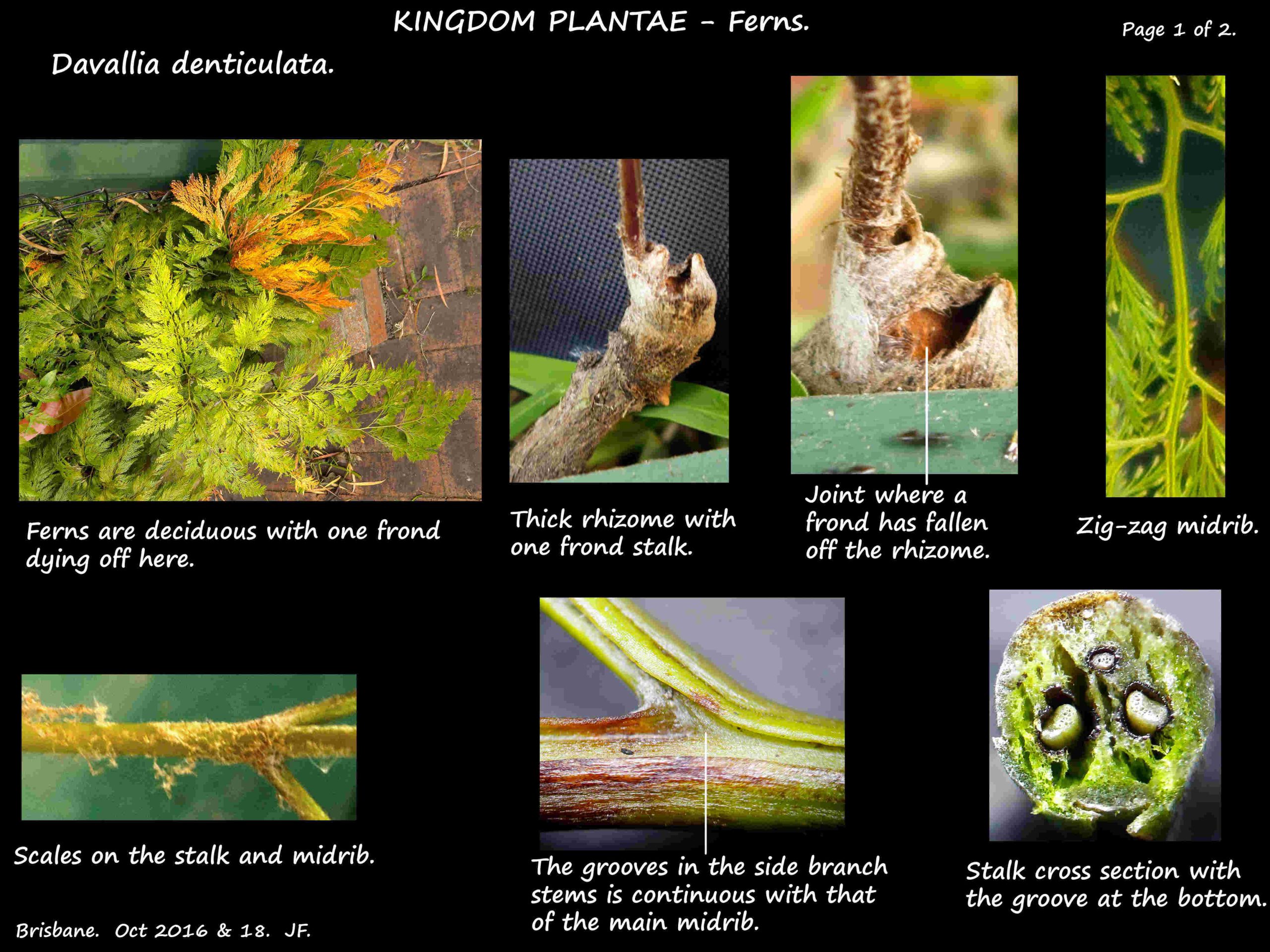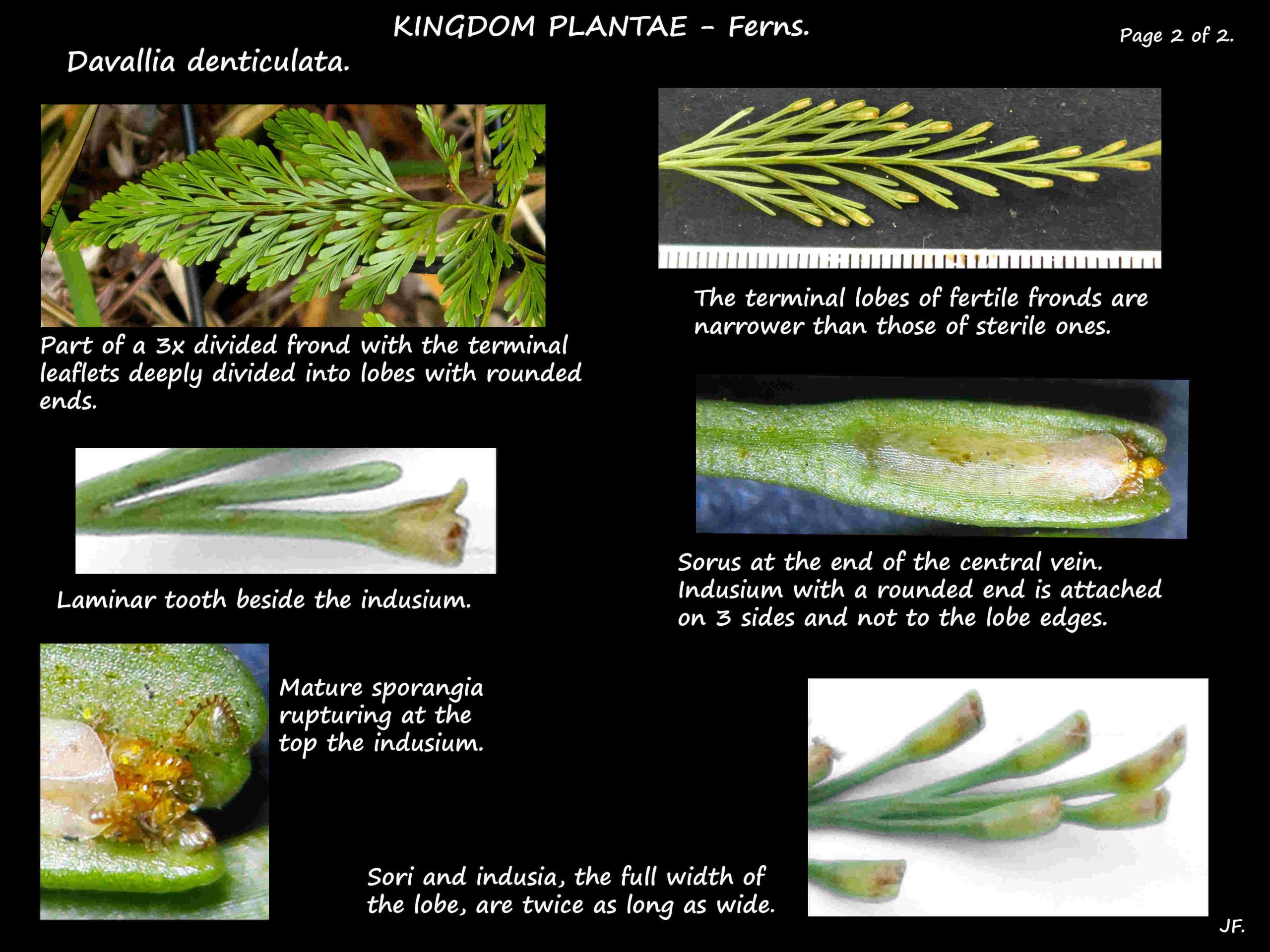Davallia.
Family Davalliaceae.
Four species occur in Queensland growing on trees, rocks or the ground and some are commonly cultivated.
D. repens and D. reticulata have simple, divided fronds and the indusia are only attached at the base.
D. denticulata and D. solida have compound fronds and the indusium is attached at the base and along both sides.
D. denticulata are mostly tripinnate and D. solida are mostly bipinnate.
Davallia denticulata.
A small or medium sized fern growing mainly on soil but can grow on trees or rocks.
The thick rhizome is densely covered, especially when young, with light or reddish-brown scales with small teeth.
There are sometimes stolons.
The plant is deciduous with the stalks jointed (articulated) to the rhizome so they can fall off easily.
The slightly zig-zaged frond stalk, usually shorter than the lamina, has a few scales at the base.
The stalk and the frond midrib are both grooved on the upper surface.
The broadly triangular fronds are usually divided 3 times with occasionally a 4th division at the base.
The ultimate segments are deeply divided into oblique lobes with rounded tips.
The lobes of fertile fronds are narrower than the sterile ones.
Veins are raised on the lower surface.
Sporangia are in oblong clusters at the end the vein in the terminal lobes of fertile segments.
They usually occupy the full width of the lobe but sometimes fall well short of it.
On one or both sides they have a small tooth of laminar tissue.
Indusia are attached on the base and both sides and have a rounded end.
Davallia solida.
It is basically very similar to D. denticulata except for the following:
The rhizome is whitish under the black-brown, hairy scales.
Fronds are twice divided and sometimes 3 times at the base.
The terminal sori are at least twice as long as wide.
The indusia, attached on 3 sides, have a flattish end.
It has 3 varieties.
J.F.



